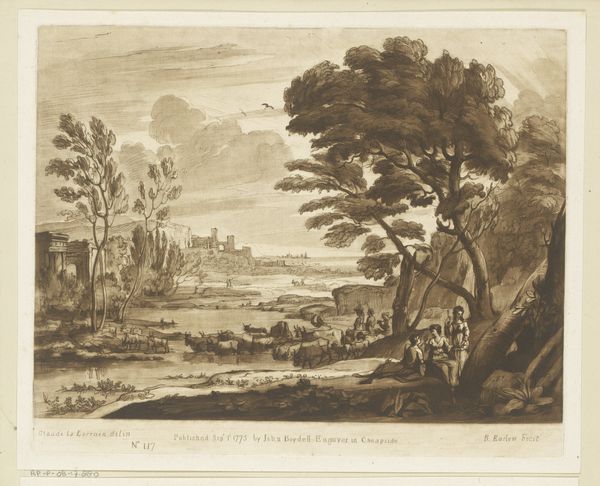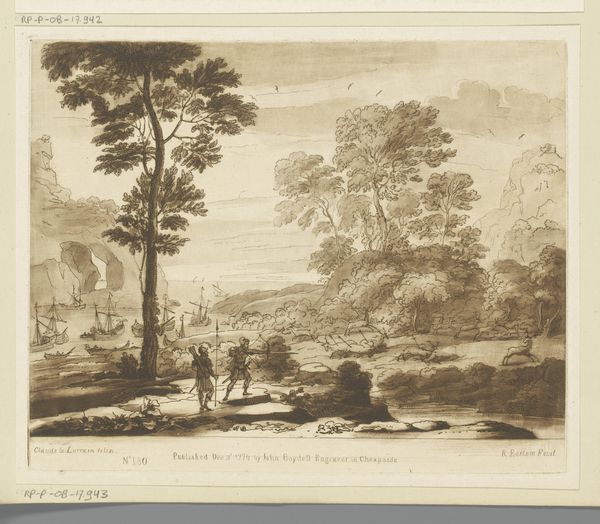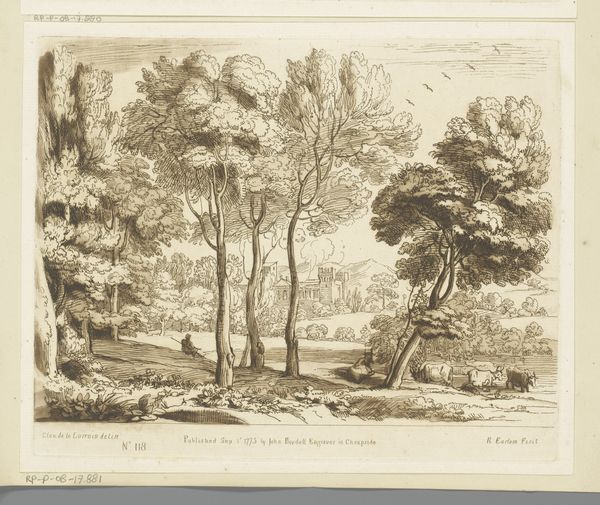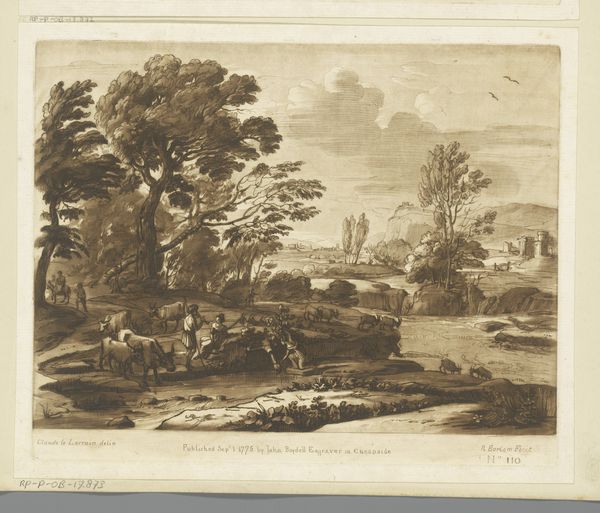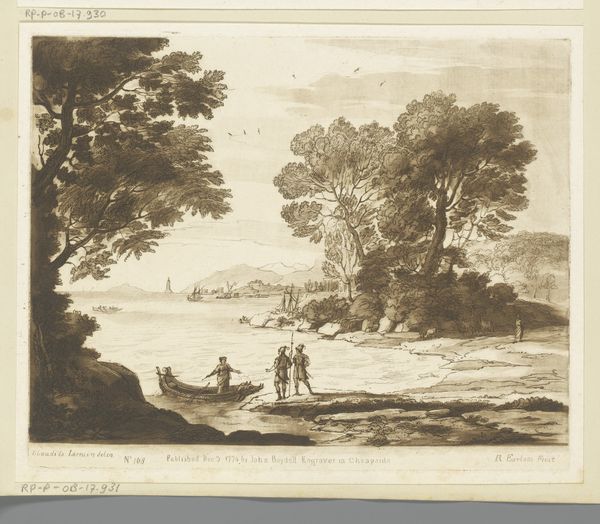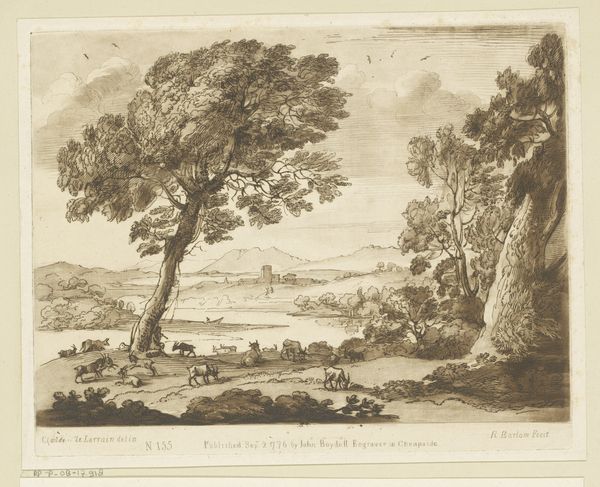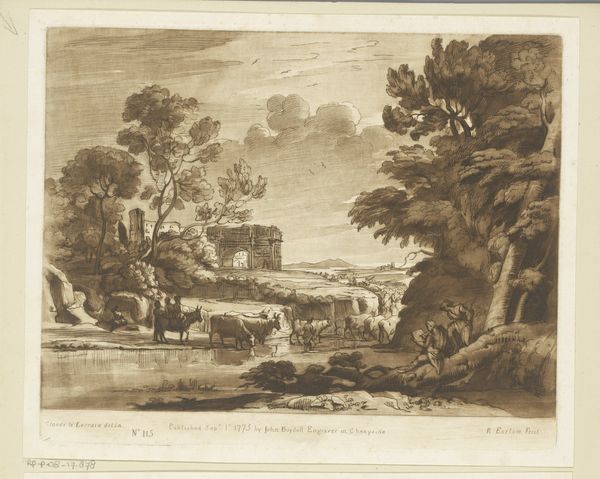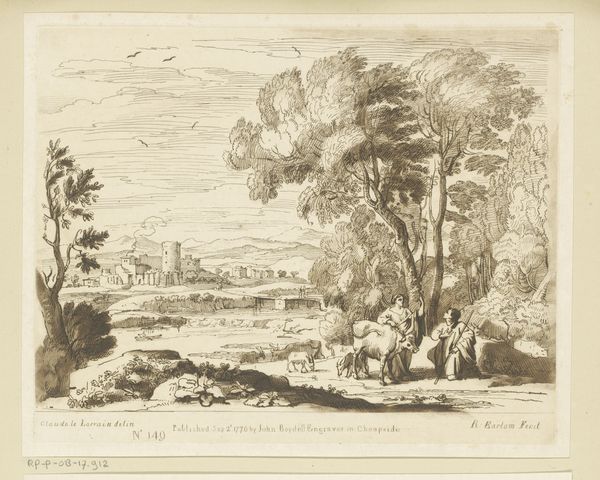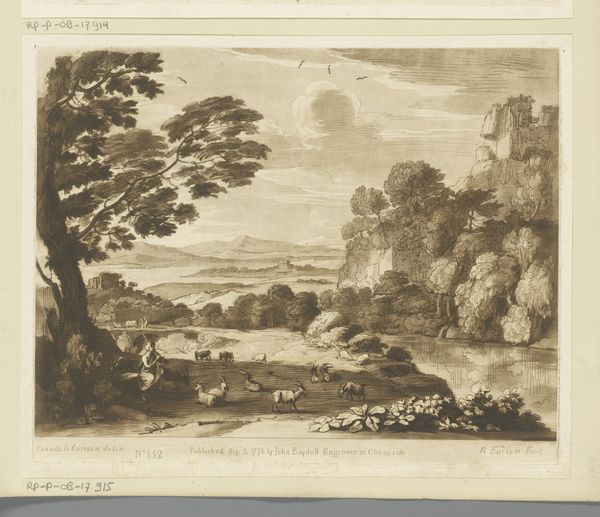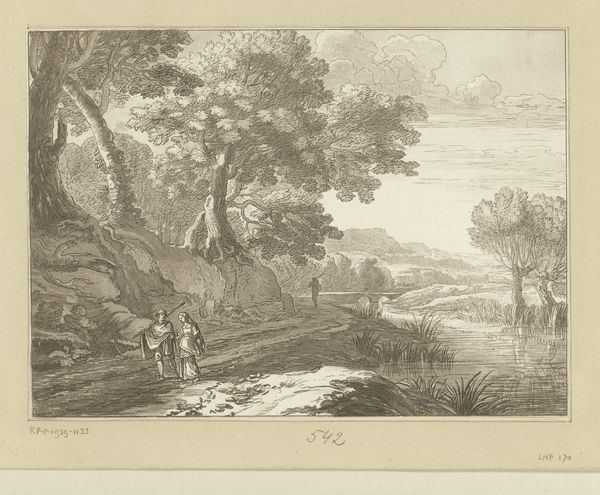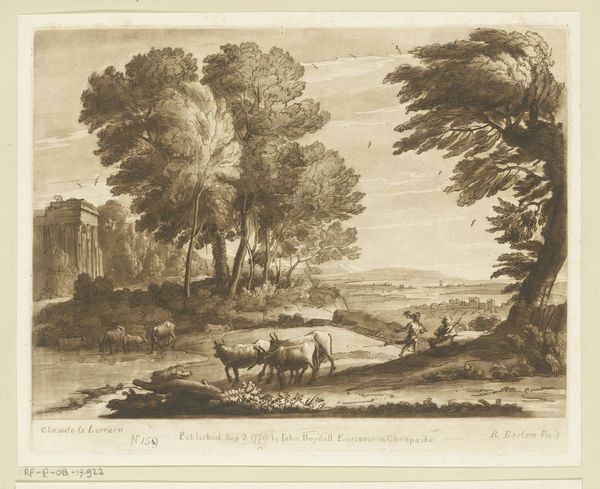
Dimensions: height 209 mm, width 257 mm
Copyright: Rijks Museum: Open Domain
Editor: This engraving, "Landscape with Hagar, Ishmael, and the Angel," likely from 1776 and attributed to Richard Earlom, depicts a biblical scene within a sweeping landscape. The delicate lines and sepia tones give it an ethereal quality. What’s particularly striking to me is how small the figures are compared to the grandeur of nature surrounding them. How do you interpret this work in its historical context? Curator: It’s important to recognize how this print functions within 18th-century print culture. Reproductions like this, after earlier masters like Claude Lorrain, were instrumental in shaping artistic taste and disseminating knowledge about art. Notice how Earlom’s print doesn’t simply reproduce Lorrain's painting but rather interprets it. What might this suggest about the printmaker's role at the time? Editor: Maybe Earlom wanted to make the work his own? Or to perhaps give access to art previously unavailable? Curator: Exactly. Prints democratized art, making these grand landscapes accessible to a broader public. Consider the narrative itself: Hagar and Ishmael, cast out into the wilderness, are saved by divine intervention. This resonated with anxieties around social welfare and the plight of the marginalized, particularly relevant themes during the Enlightenment. Does that affect your view of the composition now? Editor: It does. Seeing it as not just a beautiful landscape, but a statement on society and its treatment of those in need gives the scene new significance. I originally overlooked the historical and cultural considerations, so thank you for sharing this view! Curator: It's all about peeling back the layers and understanding art's public role and historical background.
Comments
No comments
Be the first to comment and join the conversation on the ultimate creative platform.
